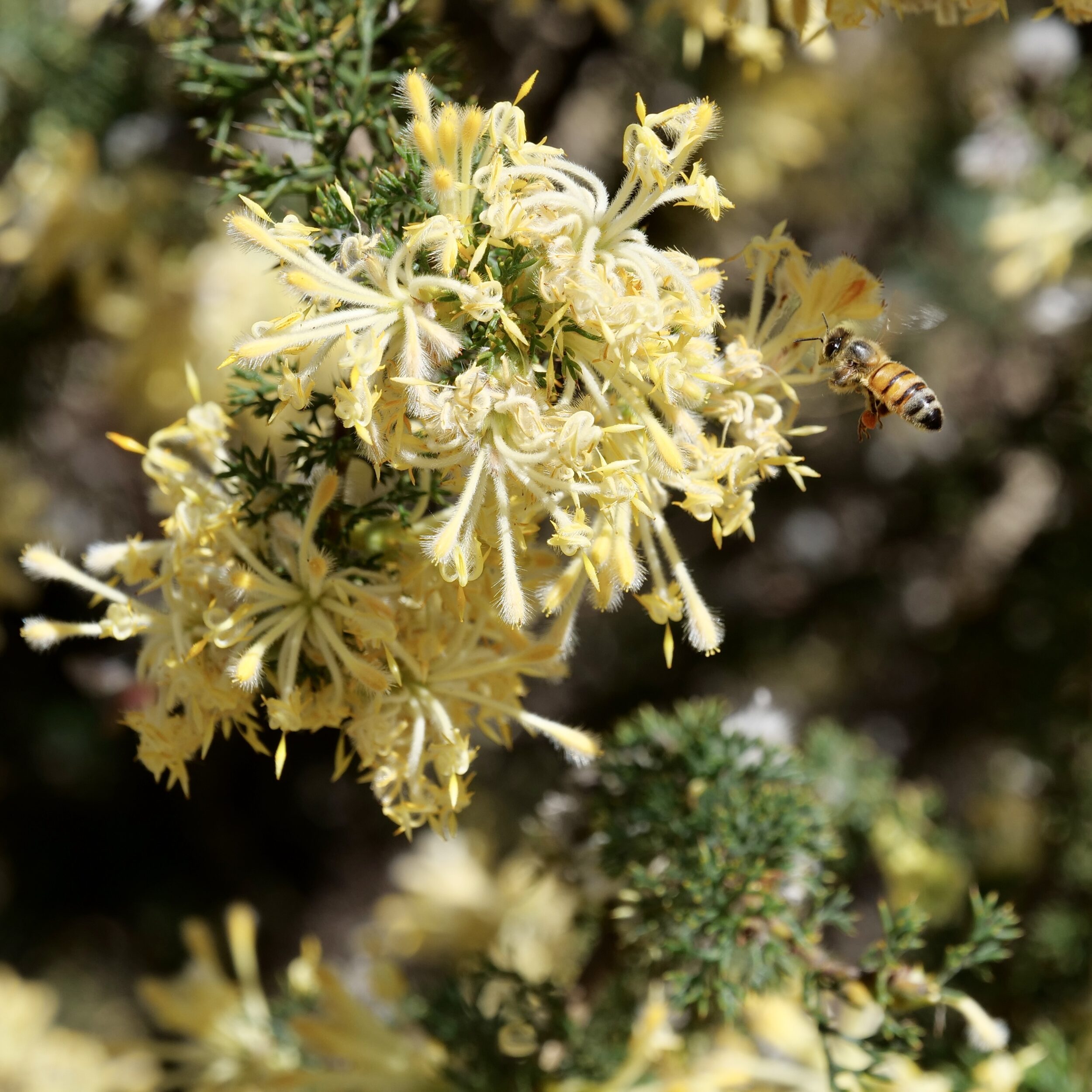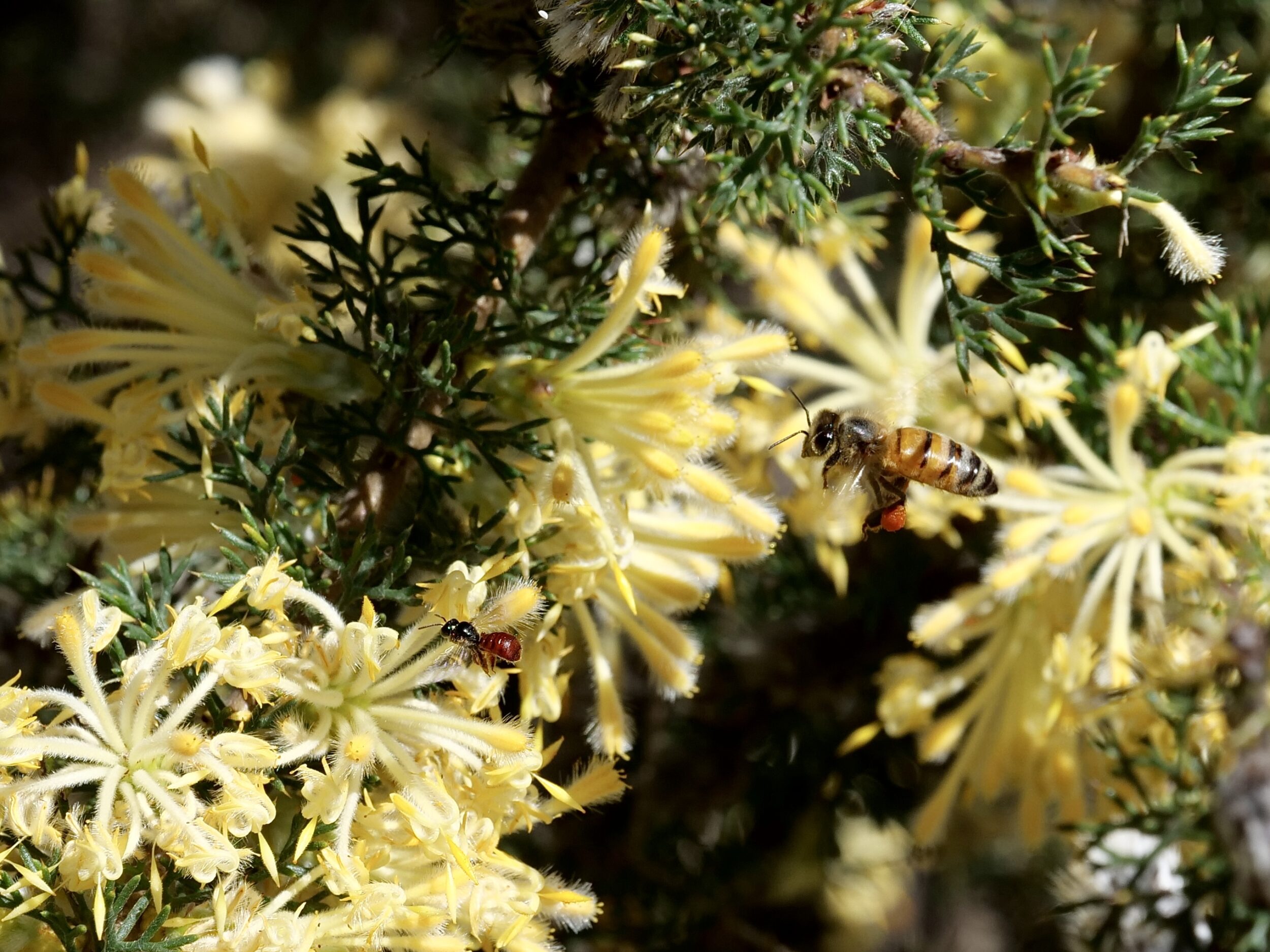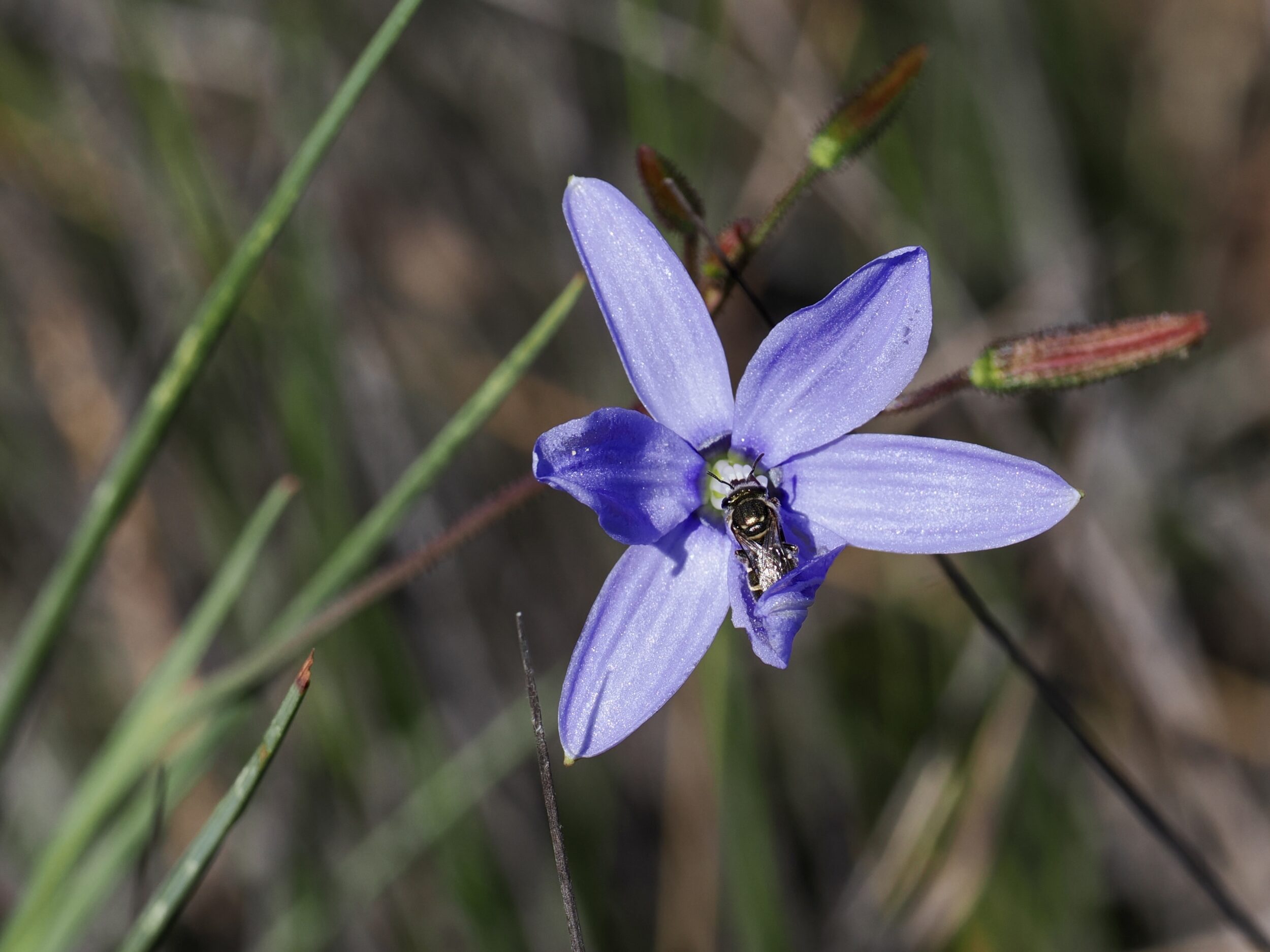I think that the featured image’s “bee” is a bee, and also a member of one of the bigger of Australia’s many native bee species.
At 2.15 pm on 30 October 2023 the sun had been shining brightly for six hours or more, so it is probably safe to assume that I was photographing a “working bee”.
However, s/he just might have been a late-awakening “sleeping bee”; some native bees shelter inside flowers that “close” overnight, and whenever else there is an absence of bright sunlight and warmth.
I recognise the pictured plant by sight, but I know neither its “scientific” name nor its “common” one.
I’d be delighted to be enlightened by someone who is botanically better-informed…and/or from somebody who can identify this post’s “native bees”.
Below, you are looking at a “European” honeybee, harvesting pollen/nectar from a member of an entirely-Australian-endemic genus.

“Petrophile” would be an excellent nickname for persons or governments who are chronically reluctant to reduce their reliance on fossil fuels, but in the world of living plants Petrophile is a genus within the Proteaceae family.
The overwhelming majority of Petrophile species are endemic to WA’s southwest, as detailed here.
As you can see in the photo below, this species’ pollen/nectar is also collected by native bees.
However, as further discussed here (in the post that previously included the same photo) many humans fail to notice native bees, because most of them are so very much smaller and less conspicuous than are “European” bees.

